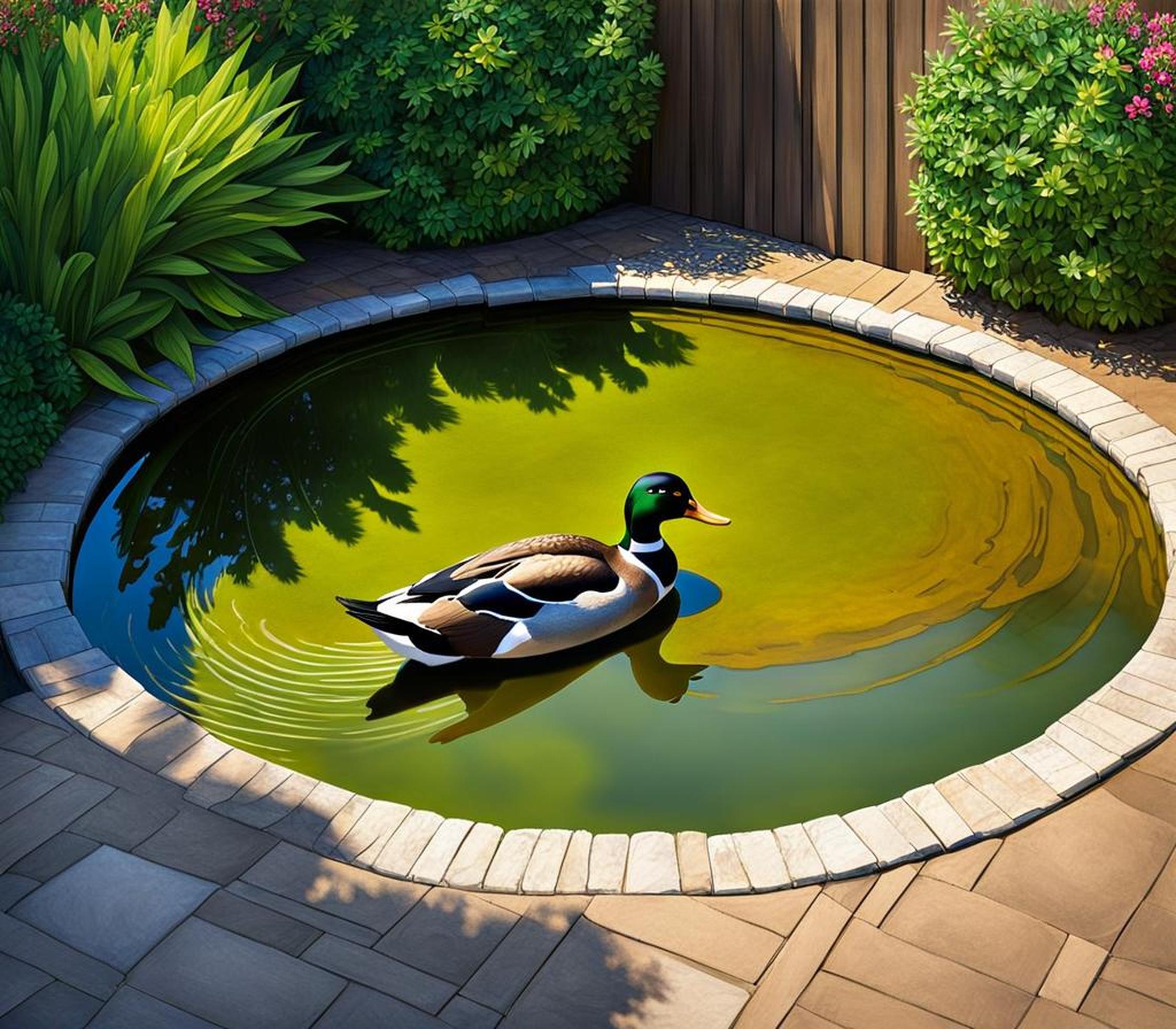For many homeowners, the dream of a backyard duck pond comes with visions of placid waters, happy ducks, and idyllic afternoons relaxing by the water’s edge. Unfortunately, the reality is often quite different, with traditional ponds requiring constant maintenance to control algae, clean filters, and remove debris.
With careful planning and construction, however, you can create a largely self-sustaining pond that brings joy, not chores. By optimizing filtration, utilizing hardy plants, and selecting low-maintenance duck breeds, you can slash the amount of care your pond requires. Follow these tips to build a duck pond oasis that practically runs itself.
Choose the Right Location for Sun and Convenience
Choosing the ideal spot for your low-maintenance duck pond will set you up for success. Look for an area that receives at least 6 hours of direct sunlight daily to discourage excessive algae growth. Situate it near your home for convenient access to electrical outlets for pumps and aerators. The location should have good drainage to prevent runoff issues that can muddy your pristine pond. And don’t forget permitting – some municipalities require approval before any backyard digging.
Install a Durable Pond Liner for Water Retention
A quality pond liner is crucial to avoiding leaks and cracks that will require frequent repairs. PVC and EPDM rubber offer durability to withstand active ducks and extreme temperatures. Opt for at least 30 mil thickness; 45 mil is better for long-term reliability. Protect the liner with underlayment padding to prevent punctures from rocks below. Measure carefully and allow an extra 2 feet around the edges to accommodate shelves or beach areas.
Shape Your Pond for Beauty and Function
When digging and shaping your pond, consider both aesthetics and functionality. Curved, kidney bean shapes add natural appeal. Incorporate different depths – 2-3 feet deep in the center for ducks to swim, with gradual slopes of 6-18 inches around the perimeter for wading. Build a rock or gravel beach for ducks to exit easily. Position external pond filters outside the liner footprint for easier maintenance access.
Reduce Debris with a Pond Skimmer
A pond skimmer is a must-have for catching debris before it sinks and decays. Skimmers continuously pull in surface water and trap leaves, twigs, and other junk in a net basket. Clean the basket weekly to prevent clogs. Position the skimmer across from waterfalls or fountains to easily catch circulated debris.
Let Plants Naturally Filter and Oxygenate
Strategically placed plants offer natural filtration as their roots and leaves absorb nutrients and provide surface area for beneficial bacteria. Floating plants like water hyacinth help shade and cool water. Submerged varieties like anacharis oxygenate and inhibit algae. Try native marginal plants like bulrushes and irises to filter along the edges.
Best Low-Maintenance Pond Plants
| Plant Type | Recommended Varieties |
| Floating | Water hyacinth, water lettuce, duckweed |
| Submerged | Anacharis, cabomba, hornwort |
| Marginal | Iris, canna lily, bulrushes |
Select Friendly, Hardy Duck Breeds
Choosing the right duck breeds will give you pleasant, lively pond companions without high maintenance demands. Small call ducks and lively khaki campbells are naturally durable and excellent layers. Allow 50-75 gallons of water per duck; overcrowding stresses ducks and dirties water. Introduce new ducks slowly to avoid fighting.

Include a High-Quality Pond Filter
A properly sized pond filter with various types of media is vital for filtering particles and maintaining crystal clear water. Use coarse foam or brushes to trap large debris, then bio-balls or lava rock with massive surface area for beneficial bacterial colonies to grow and feed on nutrients in the water. Pump water through UV lights to kill algae spores.
Regular Filter Cleaning Saves Labor
To prevent clogged plumbing and pumps, clean mechanical media every 2-4 weeks. Simply rinse bio-media monthly in a bucket of pond water to preserve bacteria. Replace chemical filter media like activated charcoal every 3-6 months per manufacturer instructions.
Install Fountains and Bubblers for Aeration
Adding fountains, waterfalls, or bubblers to your pond provides captivating splashing effects while oxygenating water. Position them to create surface agitation and circulation throughout the entire pond. Use a suitably sized pump and tubing for maximum flow. Clean fountainheads regularly to prevent clogs and reduce maintenance.
Maintain Proper Water Quality and Chemistry
Test and adjust water parameters regularly to catch any imbalances before they become problematic. Use test kits to check pH, ammonia, nitrates, and hardness monthly or more often initially. Perform 10-25% water changes as needed. Add bacterial treatments after cleaning filters or water changes to replenish populations.
Keep Your Pond Sparkling with Natural Treatments
Instead of synthetic chemical algaecides, try natural pond dye/enzymes that inhibit algae growth by blocking sunlight penetration and absorbing nutrients. Barley extracts also reduce algae. Introduce beneficial bacteria to break down organic debris. Your local pond specialist can provide recommendations.
Prepare Your Pond for All Seasons
Depending on your climate, seasonal preparations may be necessary. In fall, add netting to catch falling leaves or install a pond cover. In winter, maintain a hole in frozen surfaces for gas exchange. Consider a pond de-icer to protect plumbing. Monitor for duck stress during extreme heat or cold.
Following these guidelines for construction and optimization will reward you with a practically self-sustaining pond. Add some cozy seating and lovely landscaping around the edges to create your perfect backyard oasis. Spend leisurely afternoons listening to the ducks splash without a care while your pond maintains itself. A low maintenance duck pond delivers all the joy without the chores!
